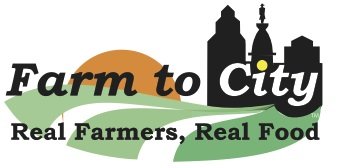August Seasonal Market Guide
Solanum melongena; member of the nightshade family
Eggplant
A vegetable that loves to soak up a good sauce; under-cooked eggplant tastes very bitter so wait until it is crispy around the edges and creamy on the inside before serving.
Most commonly purple, eggplants come in many varieties including Chinese, Fairy Tale, Globe, Graffiti, Italian, Japanese, Raja, Little Green, and Rosa Bianca.
Abelmoschus esculentus; part of the mallow family, same family as cacao and cotton
Okra
It's a vegetable with a history intertwined with the Atlantic slave trade, native to the northeastern coast of Africa, present-day Ethiopia and Egypt, and brought over on slave ships to the Caribbean and southern parts of America.
Okra has became a staple ingredient for Southern cuisine, especially in Creole and Cajun culture; usually served dusted with cornmeal and fried, pickled, or in a gumbo.
A stone fruit from the Prunus genus
Plum
The plums that come to market usually need a few days at room temperature to ripen, they're ready to eat or cook when they have a little give under their skin.
Plums love being paired with savory ingredients, like cheese and nuts, red wines and brandy, even ginger and soy sauce but, at this time of year, we also recommend making a giant seasonal fruit salad: diced plums and peaches, blackberries, and the final blueberries of summer.
A botanical cousin to the pumpkin and the cucumber, all part of the Gourd family
Melon
Like okra, melons are another summer crop native to Africa and southwest Asia.
Popular melons at market are cantaloupe, honeydew, canary melon, and watermelon.
Everybody has opinions on how to shop for a ripe melon but here's advice that's always true: inspect for soft softs, lightly knock on surface and listen for a hollow sound, then take a deep breath near the stem end and wait for a slightly sweet, floral aroma.
Foeniculum vulgare; within the Carrot family
Fennel
Famous for its licorice flavor, the bulb of this vegetable is best when served raw in salads, usually paired with tomatoes or apples or citrus, roasted with garlic and parmesan cheese, or braised with white meats like chicken or rabbit.
The fronds of this funny-looking plant are also very flavorful; carefully pluck and sprinkle on top of salads, rice, or deviled eggs.
Helianthus, from the root word helios meaning "sun"
Sunflower
Native only to the Americas, sunflowers are truly one of the world's most spectacular plants, with a flowerhead that has a rich natural history and a fascinating mythology and a seed that is valued for its nutrition and oils.
Sunflowers also have a spellbinding morphology. Look in the center of its flowerhead and behold: the florets and seeds are arranged in a complex pattern known as the Fibonacci sequence.
Illustrations by Jacqueline Quinn

